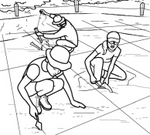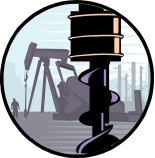
Worksheets and No Prep Teaching Resources
Reading Comprehension Worksheets
Fossils
Earth Science

Fossils
 Worksheets and No Prep Teaching Resources Reading Comprehension Worksheets Fossils Earth Science |
 Fossils |
| edHelper's suggested reading level: | grades 9 to 10 | |
| Flesch-Kincaid grade level: | 9.09 |
| Print Nonrenewable Resources - Fossil Fuels (font options, pick words for additional puzzles, and more) |
| Quickly print reading comprehension |
| Print a proofreading activity |
|
Nonrenewable Resources - Fossil Fuels
By Trista L. Pollard |

|
 1 Deep within our Earth's crust there lies some of our most important natural resources. These resources help to heat our homes, run our cars, and maintain machinery in our major industries. As the high demand for these natural resources continues to grow, so must the realization that these resources are limited and nonrenewable.
1 Deep within our Earth's crust there lies some of our most important natural resources. These resources help to heat our homes, run our cars, and maintain machinery in our major industries. As the high demand for these natural resources continues to grow, so must the realization that these resources are limited and nonrenewable. |
Create Weekly Reading Books
Prepare for an entire week at once! |
| Leave your feedback on Nonrenewable Resources - Fossil Fuels (use this link if you found an error in the story) |
 |
Fossils
|
 |
Earth Science
|
 |
High School Reading Comprehensions and High School Reading Lessons
|
 |
Science
|